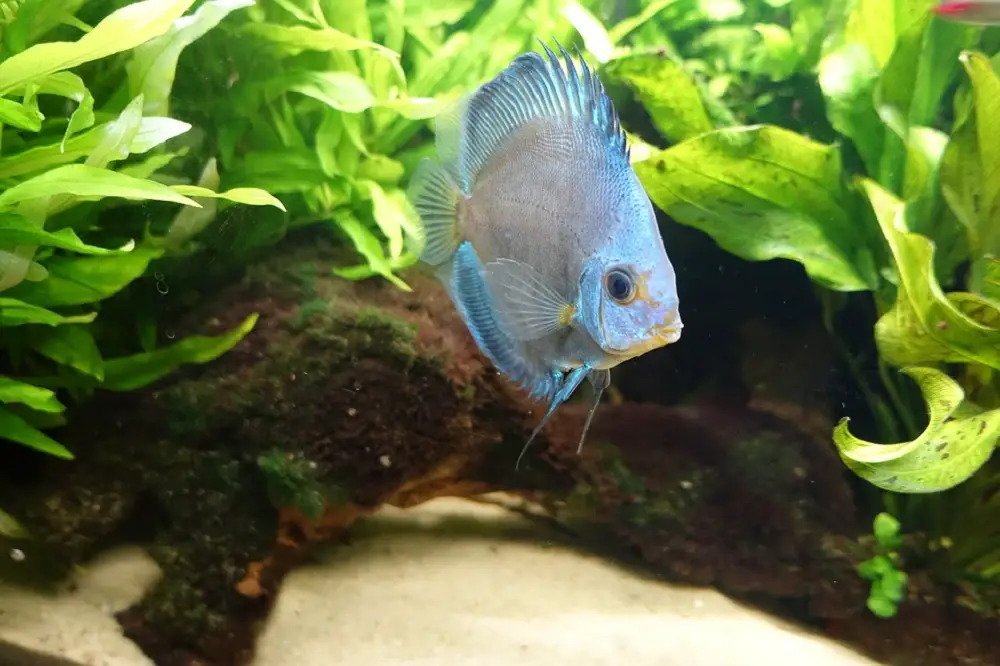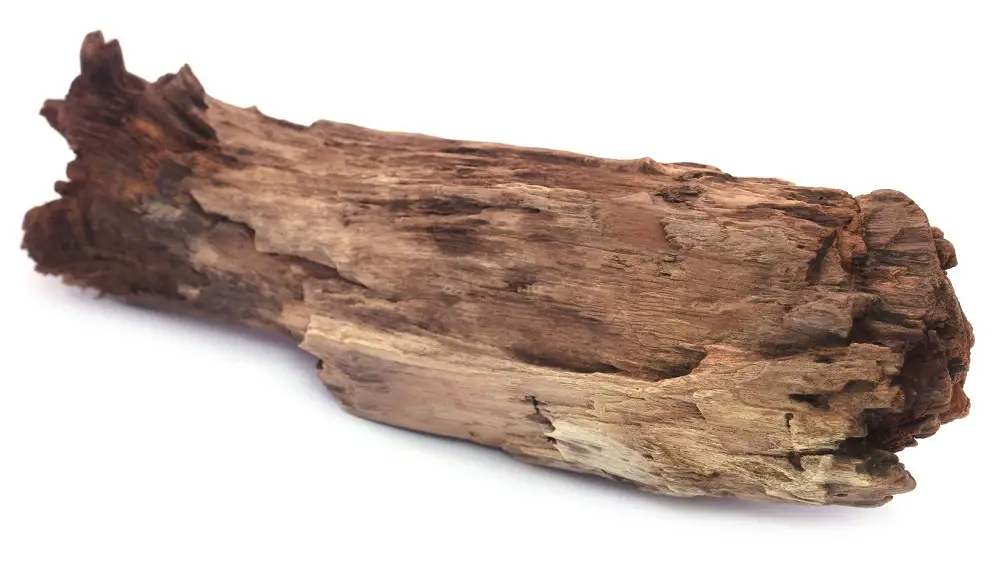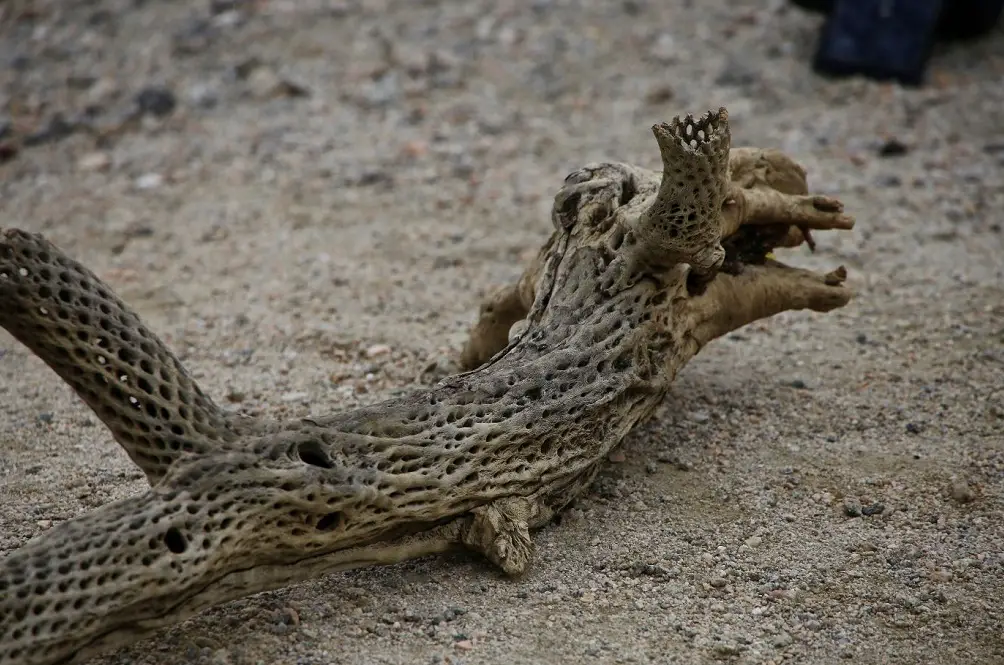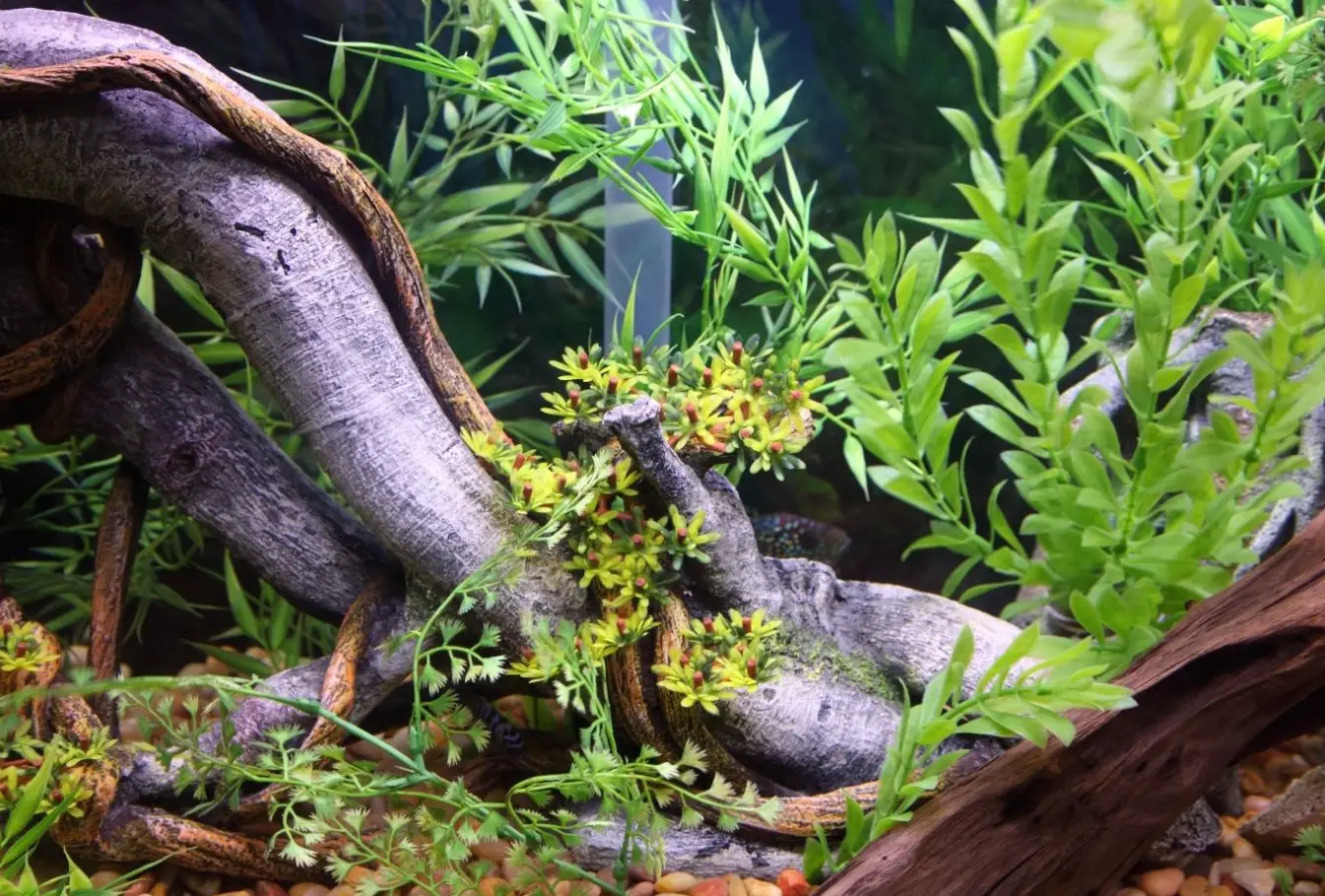Having pretty fish in your aquarium is fun, but do you know what makes owning fish even more fun? That’s right - adding a little bit of decoration! People love looking at a well decorated fish tank. Not only that, but putting things in your fish tank means that your fish have places to go to feel safe, have fun and to hunt for food. They can have something that almost mimics their natural environment.
Now, when we usually think of fish tanks, what do we think of? We think of things like plants. Plants aren’t the only kind of natural decoration for your fish tank, however. You can also use driftwood.
Think back to the sorts of aquariums that you would have seen when you were a child. You may have just seen tanks with basic brown driftwood - this was the main form of decoration in plants many years ago.
This isn’t quite so common these days, since there are a wide variety of decorations that you can get for your tank. You can get things like castles, various shapes and caves and you can create aquariums with a lot of color. In fact, you can even use certain kinds of tree wood in your fish tank these days.
It’s worth mentioning that you can’t use every single kind of wood in an aquarium - it simply isn’t safe. As such, we’ve written this guide to tell you about what kinds of wood you can and can’t use in an aquarium. This will help you to create the best possible aquarium, ensuring that everything that you put in there is safe.
Driftwood: What Is It?

First of all, it’s important to establish what exactly driftwood is. This is rather simple. It’s the bits of things like bushes and trees that have fallen off and made their way into bodies of water such as rivers, lakes or oceans. After a time, the drifting wood begins to shed the bark on it because the water causes it to decay, thanks to the waves and tides.
What you may be surprised by is that actually, some driftwood doesn’t come from the water at all.
There’s some driftwood that will decay over the course of a number of years. There are some kinds of driftwood that you can get from desert areas. These haven’t even been put in the water. In short, then, aquarium driftwood these days is basically any kind of natural wood that you can put in a fish tank without putting your fish in any kind of danger.
The Purpose of Putting Driftwood In An Aquarium
There are a lot of benefits to putting driftwood in a fish tank. First of all, it’s fantastic for adding some decoration to an otherwise plain glass box tank. Your attention is drawn to the wood, and it looks very attractive in your tank.
It mimics the appearance of the world beneath the waves. It can sometimes look like just an intricate root, or you can get driftwood that looks more thick like a log. Of course, it’s not just about aesthetics either. There are some practical benefits to putting driftwood in your tank.
The other benefit of driftwood is that it will give your freshwater fish and shrimp a habitat that’s more akin to their natural one. Your fish will have little isolated areas that they can explore or take cover for safety in.
If your fish can lay eggs then they may find an area around the driftwood to lay their eggs. Sometimes this is right on the wood, other times this may be close to the driftwood. Not only that, but it provides the fish with a safe space if they are feeling anxious or threatened by other fish.
In addition to this, algae and microbes are much more likely to grow on driftwood. Initially you may think this is a bad thing, but hear us out. Algae growth is actually very important for your fish.
This is because a lot of fish will try to eat algae - it’s basically a natural food source for them. Many tropical fish out in the wild will eat this food - it’s also known as surface growths or ‘aufwuchs’ in German.
Do you have pleco catfish? Well, some kinds of these fash will sometimes eat pieces of driftwood. This even has a term - it’s called Xylophagy. It’s something that panaque catfish will do, such as a red eyed pleco catfish.
Even putting all of this aside, it’s important to note that all kinds of fish that you put in an aquarium will have a great time with a driftwood landscape. They don’t need to eat the wood in order to appreciate it.
Different Kinds of Driftwood
As it turns out, you can use a number of different kinds of driftwood in your fish tank. It’s worth noting that you don’t necessarily have to use driftwood in your tank - you can use different kinds of wood too. The vast majority of wood that you will find for sale hasn’t even been next to water for a long time slowly decaying. You can still use that wood for your aquarium, so long as it’s safe.
Thankfully, you can get a wide range of different wood types that will look spectacular in any fish tank. Most of them are also totally appropriate for all types of fish, snails, frogs, shrimp and so much more.
There are some kinds of wood that have special properties. For instance, there are some woods that can unleash tannins out into the water in the tank. These are important since they can help to ensure that the plant doesn’t get invaded by plant pathogens while in the water.
Tannins serve another purpose too. They can also change the color of the water. It may start to look more like a tea sort of color. There are a lot of people that like this sort of look, as it looks very similar to blackwater in Amazonian rivers.
If there are too many tannins in the water though it can start to look a little dark in there. This won’t cause any problems for your aquatic friends, but it does make it somewhat hard to appreciate your fish since you may struggle to see them.
With all of that in mind, here are just a few of the key kinds of aquarium driftwood that you can usually find. You can find most of these either in pet shops or online, so you should keep your eye out for them! We aren’t going to go into specific species for every type of driftwood here, however. Our summary will just give an overview of some of the key kinds.
Bogwood

True Bogwood used to be quite common in aquariums. It was fairly simple to get some, since it was basically wood that would stay under the water for a number of years. When it was taken from the natural water, it would then be put into an aquarium.
Unfortunately, it’s a lot harder to find authentic bogwood unless you look in more specialist places today. It’s not authentic. Bogwood today is essentially a combination of wood products that are both weathered and dried, that are cut in a specific way so that they can go inside of the aquariums.
You will find that some of them have been attached onto slate that is covered with gravel for your aquarium. This is pretty important as it helps to ensure that the wood doesn’t start to float around in your tank. It keeps it anchored in place.
This kind of driftwood is really popular for a wide variety of reasons. First of all, it’s incredibly simple to use. It looks almost like a little tree in your fish tank, and it can fit in with pretty much any aquarium theme on the planet.
You can also make it look even better by putting java fern, moss or anubias to go in the tank. Some bogwood may need to be soaked before you put them in the tank to stop them from floating though, unless they are already weighted.
If you’re looking to encourage tannins in the water, then bogwood is a good choice since it’s known for this. It can be difficult to know just how many tannins bogwood will put into your tank though, so it’s vital to ensure that it’s cured first.
Mopani Wood
The Mopani Wood looks a little like a club in many respects. In terms of color, it’s similar to the sand you might see on the beach, with a light yellow to orange color palette. It’s also very easy to find in major retailers and also online.
So, what do you need to know about this type of driftwood? Well, the tree originates in South Africa, and it also grows in other places like Namibia and Botswana. The wood doesn’t usually get soaked in rivers or bogs.
It’s an incredibly big tree so long as it’s grown in the correct conditions. It looks very different if you grow it in sand like soil - it resembles a bush more than anything. It is this latter type of wood that tends to make its way into the fish tank.
This kind of wood is rather heavy, meaning that you don’t need to worry too much about anchoring it down. It will usually just sink on its own. It is good if you want plenty of tannins in your fish tank. It is a good idea to make sure that you cure it beforehand though.
Sumatran Driftwood
This kind of driftwood comes from individual parts of mangrove roots. When the land is cleared away from around these trees, people will then gather the wood. They are then altered in order to get rid of the bark, rather than being burned.
This is great, since the driftwood ends up looking much more attractive and smooth. This kind of wood is primarily designed to be used in larger aquariums since the wood itself is rather big.
It’s worth noting that this kind of driftwood most likely isn’t going to end up changing the color of the water or making it discolored. You may find, however, that if you don’t cure the wood then it may start to float in the water. If you’re using it as a centerpiece in your aquarium then it’s best to ensure that it’s cured first unless you want it to float around in the tank.
Redmoor Root Wood
If you want it to look like there’s a real tree in your aquarium, Redmoor Root Wood will likely be a good fit for you. It basically looks as if a whole true stump and the roots has been put into the tank, making it a popular choice.
It resembles the appearance of tree roots that are tangled next to the river’s edge. It’s pretty attractive! Not only this, but the driftwood is quite tangled, providing lots of fun for your fish. They’ll have something fun to explore. It looks 3 dimensional too, making your tank look more diverse overall.
The wood is a red sort of color, and this is fantastic for adding more life to your fish tank. It doesn’t demand too much attention though, meaning that your gorgeous fish are still the stars of the show.
You should know, however, that this wood can be prone to floating and it occasionally starts to get water logged around two weeks after it has been cured. There are some varieties that may be much slower to become waterlogged. Whatever the case, it’s best to have some patience if you want your tank to look truly spectacular.
Cholla Wood

This type of driftwood comes from the Southwestern parts of the United States. It’s a big cactus, and it can grow as tall as 13 feet! Sometimes that cactus is referred to as a ‘walking stick.’ It’s a rather prickly plant when it’s alive, so it’s best not to try and touch it! After the plant has died and it starts to dry, what remains is what looks like a brown, wooden tube covered in tiny little holes.
This type of driftwood looks great, but it’s especially good for people that have shrimp tanks. This is because the surface of the wood eventually grows a biofilm on top. Your shrimp can then consume this biofilm, and it’s very good for them. They can also relax inside the tube as they are molting. It’s a good choice for small fish too, as it gives them plenty of exploration opportunities.
If you are looking for a kind of wood that will release tannins into the aquarium, then cholla wood is a good choice. All you need to do is ensure that you cure it first if you have any worries about it changing the color of the water in your tank. It can occasionally float too, so it’s best to soak it first in order to ensure that it sinks.
Marsh Root
This European driftwood can sometimes be found in North American states. You will usually find that it will have already been aged and soaked in the water before you purchase it.
Of course, it’s not going to put any tannins into your aquarium, so in one respect it’s great if you don’t want the water color to change. This is a good choice of driftwood if you prefer to have light gravel in your tank, since it contrasts with its dark color. Put it in the center of your aquarium and your guests are sure to be in awe.
Mananita Wood
There are a number of different kinds of Manzanita wood, so this is going to be a general summary. The name essentially refers to a wide variety of evergreen shrubs. They originate from locations in the United States, such as New Mexico, Texas, Oregon and California.
These are fragile, yet beautiful little branches and they look like roots if you put them in water based environments. You don’t need to worry about constantly replacing it either, since the wood lasts for a number of years and it won’t disintegrate.
The color can range from red to tan. If you cure the wood then it will be easier to make it sink. It also releases tannins, so it’s good if you want that Arizonian water sort of look.
Saba Wood
For a lively looking driftwood, Saba wood is a fantastic choice. It’s a gorgeous deep brown sort of color, with unique streak marks in the branches. It looks a little bit like a buffalo horn as far as texture is concerned. It looks unique in both color and shape, making it a good fit for a wide variety of different aquariums.
What Plant Materials are Safe for Aquariums?

It’s always best to double check if a kind of driftwood will be safe both for your aquarium and for the kinds of aquatic life that you are keeping. There are some key plants that are suitable for the aquarium though. For instance:
- Cherry
- Apple
- Alder
- Birch
- Hawthorn
- Beech
- Heather
- Pear
- Oak
- Sycamore
The main rule of thumb is that you need to find wood that has already died and has started to dry out. Avoid using any wood that still has sap in it. It can often help to peel back the bark as this will help to see the wood that’s underneath it.
There are some woods that are best avoided for aquariums too, such as:
- Spruce
- Yew - it’s lethal for your fish
- Cedar
- Cypress
- Horse chestnut
- Grape vine - it will die too quickly in the aquarium
- Ivy - toxic
- Lilac - toxic
- Pine
- Walnut
Of course, it could be safe for you to use these sorts of materials if they’ve been in bogs for around half a century, but we doubt that you’re willing to wait that long. Don’t just go picking them up from the ground and putting them in the tank. It’s better not to take the chance. There are so many other kinds of driftwood that we know are safe, and they look equally as good.
Where Can I Buy Driftwood for My Aquarium?
It can be a lot harder to find the rarer kinds of driftwood. These products are usually a lot more expensive too, so it’s worth keeping that in mind. To find these more exotic woods, you can look online. You will usually find that specialty dealers will have them listed on their websites.
These products are so expensive because they are hard to come by, so serious aquascapers are eager to buy them when they become available. You can look online though and get a wide variety of different kinds of driftwood online from reliable sellers.
The main thing that you will need to do is check that the wood size is a match for your aquarium. In some cases you may need to trim the driftwood, but this shouldn’t be too challenging.
Now, if you do intend to look for the driftwood yourself then you’re going to need to ensure that you know what the driftwood in question actually looks like. They may be labeled differently, meaning that it’s harder to find exactly what you need.
How To Prepare Your Driftwood
Once you have acquired your driftwood, the next thing that you need to do is prepare it for the tank. It’s important that you make the assumption that every kind of driftwood is going to release tannins into your aquarium.
Here’s what you need to do. First of all, get a plastic bin and fill it up with water. You will need enough to ensure that it totally covers the entire driftwood piece.
Sometimes it may be necessary to anchor the wood down with something heavy to make sure that it doesn’t float - rocks or clay bricks are usually a good choice. It’s even better if you can get bins that have lids.
When you have done this, you will then need to keep an eye on the water on a weekly basis. Each week, remove a cup of water from the bin and check the color. You need to be checking to see if the water has become yellow in color.
Every week you will also need to change the water in the bin. Keep on doing this until you’re okay with the level of tannins being released.
Of course, there’s nothing wrong with tannins, it’s just that some people aren’t keen on the look of them. You’re going to need to choose how much of it will be okay with you.
There are a lot of experts that will sometimes boil the wood for a few hours as this can help to reduce the time that it will take for the wood to cure. If you are going to do this then you’re going to need to get a large bin to put the wood in. Play around with it, since driftwood is unique so you need to ensure that the curing process is working well for the particular wood in question.
pH Levels and tannins
Sometimes brown tannins can end up reducing the pH level of the water in the tank.
Tannins are harmless substances that grow naturally from the wood. Not all of them will reduce the pH either.
Sometimes aquarium wood can gradually lower the pH, but this is only when the carbonate hardness or KH level is too low.
Ultimately, if you are looking to put driftwood in your aquarium for the sole purpose of lowering the pH, it may be better to use another method.
Sticking Aquatic Plants onto Driftwood
The vast majority of people will just use driftwood in their tank without adding plants onto it. With that being said, some people like to give their tank a more lively look. With this in mind, it’s good to know how to attach other plants onto the wood to make your tank look more unique. This can also make the tank look bigger than it actually is.
They also look pretty cool - you don’t need to have a larger tank to do it either. You can add plants like bolbitis, or microsorum pteropus. You can also add Christmas moss! It all looks fantastic and you can mix it up based on what best suits your aesthetic.
White Mold Issues
Sometimes you may notice that your driftwood has developed water mold once it’s been put in the tank. It can seem a little bit concerning if you didn’t know it was likely to happen. Through time this mold will begin to disappear, because biofilms will start to form on the wood. If it doesn’t go away on its own though you can simply boil it away.
Conclusion
Driftwood is a very popular choice for people looking to give a more three dimensional look to their aquariums. It’s been used for more than 100 years, and it looks totally natural too. It’s great for your fish as they can explore the driftwood, and you can make it look unique in your tank by using lots of different types of driftwood. Just make sure that you’re using a material that’s safe for your aquarium and your fish, and you’re good to go!
